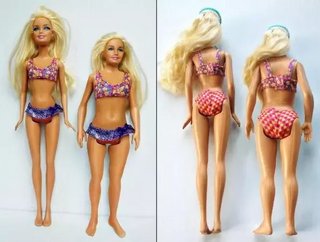Breaking News: Barbie and Ken Financial Troubles

The July edition of The Business Review USA is now live!
Barbie and Ken may have trouble in paradise. Instead of vacationing in the Hamptons, Barbie may need to pick up another job. She is already a doctor, vet, Miss America, airline pilot, socialite, teacher and busy wife – but her sales are declining so fast she may have to put one of her Barbie Dream Houses up for sale to stay afloat, and the happy couple may need to consider selling one of their many pink Corvette’s. This is literally just like punching my childhood in the face.
Apparently little girls are fully over Barbie, based on the reported 12 percent decline in sales. Now that Barbie is “older” (a lady never reveals her age) she is finding it hard to keep up with Gen Z, however Mattel has bigger problems than trying to keep Barbie young.
Hot Wheels are more lukewarm than “hot” these days and sales of Fisher-Price toys have also declined. American Girl was the standout in this fizzling party. Sales for the iconic doll and all of its accouterments (IE: clothes for both doll and child, furniture, movies, books, and a ridiculous amount of accessories that every girl must have to get the full American Girl experience) increased by 14 percent, albeit after an aggressive (and expensive) marketing campaign.
Little girls, why are you turning your backs on Barbie? While I doubt any children are reading this column, experts have their own theories as to why the iconic doll may be losing steam.
Body image may play a key factor in the ultra-skinny dolls declining sales. Barbie has traditionally been criticized for her too-thin frame, heavy makeup, and other assets that are impossibly large. Parents may be giving their little girls dolls that are not quite as perfect as Barbie. Enter: Monster High Dolls. That is a trend I just don't get.

Mary Shearman, a PhD candidate in gender, sexuality and women’s studies Simon Fraser University, speculated in an article in the Globe and Mail that Mattel may find themselves leaning on their non-Barbie dolls more and more as parents and children seek out more relatable dolls:
“There was a sense that you wanted to expose little girls to role models that were a little more diverse and not so stereotypical, so they tried to make Barbie active and gave her all kinds of activities to do and tried to make her more interesting than a beauty queen.”
Artist Nickolay Lamm gave Barbie a radical makeover to reflect the body of an average teenage girl. Average Barbie has not been endorsed by Mattel, and is modeled off the body measurements of a normal 19-year-old American girl using data from the CDC. She is shorter and broader, with a smaller head and thicker neck.

“If Barbie looks good as an average woman and even there’s a small chance of Barbie influencing young girls, why can’t we come out with an average sized doll?” Lamm tells TIME. “Average is beautiful.”
It can’t be guaranteed that declining sales are due to Barbie’s negative effects on body image, but that certainly is the prevailing opinion.






